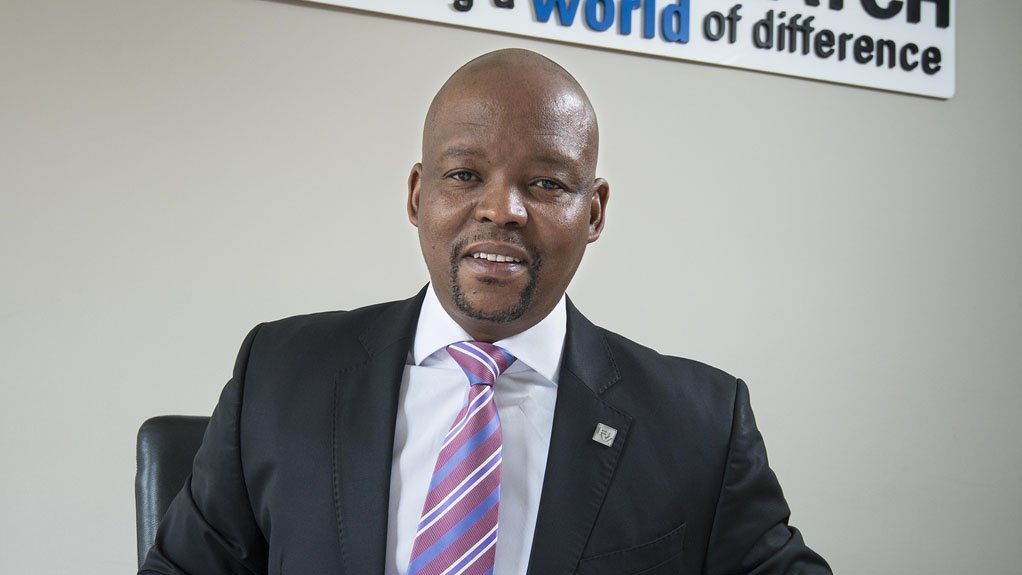Global leading engineering, consulting and construction company Black & Veatch sub-Saharan Africa business development director Webb Meko says successful exploration for shale gas could make up for South Africa’s lack of natural gas as a power resource.
“Concerns about the possible detrimental effects of fracking on water resources in the Karoo basin are justified, but advances in resource management practices indicate shale gas should not be disregarded completely. Theoretical estimates indicate South Africa possesses the eighth-largest shale gas resource globally, offering abundant levels of low-carbon energy.”
South Africa’s progress in developing a gas industry and a gas-to-power programme has been slow, and is insufficient for the gas sector to immediately benefit, says Meko. He adds that State-owned power utility Eskom installed four quick-reaction gas turbine power stations between 2008 and 2014, with a combined capacity of 2 426 MW, in the Western and Eastern Cape. Three of the four power stations are in the Western Cape, namely Acacia, Gourikwa and Ankerlig, while Port Rex is in the Eastern Cape.
Two of the turbines use liquid fuel, or diesel, while the two older-generation, open-cycle gas turbine stations use kerosene. Meko explains that the turbines were initially built to be used during peak times or in extreme emergencies during the country’s power deficit in 2008, owing to high operating costs.
“Building these power plants was the first step in terms of creating a prominent gas sector for South Africa, despite their running on diesel and not gas – a problem which can easily be resolved by hybridising the power plants,” says Meko.
Meanwhile, he adds that Black & Veatch, as well as many prominent industry investors and stakeholders, are eagerly anticipating the finalisation of the gas utilisation master plan (Gump) and the latest iteration of the Integrated Resource Plan (IRP), both of which are still in the draft phase.
Gump is a guideline for the development of a gas economy, explaining the framework for the investment in gas infrastructure, the role of gas in the local market, the regulatory environment, government commitments and economic prediction, as well as demand, supply, market structure, industry organisation, environmental risks and social impacts.
It has been questioned why Gump, being such an important document, has not yet been released. The reason cited by Meko is because of the complexity of the gas landscape and the diverse nature of stakeholders.
He says the thinking behind establishing a gas industry was centred on the idea that the power sector in South Africa would act as an anchor industry, allowing for the gas sector to be reticulated. This would be beneficial to the industry as it would ensure an uninterrupted supply of gas in households and industries alike.
Meko urges for the finalisation of Gump and the IRP, as these documents would provide consistency for stakeholders and investors; if there is consistency, there is a long-term plan on how the market progresses.
The approach to South Africa’s gas industry would be what is referred to as a bundled approach, where the developer would own the liquid natural gas used at the power facility and the facility that transfers power to the transmission grid. Meko describes the gas-to-power programme as “momentous”, which would require various consortiums to be formed and bring industry players together.
Shale Gas
The occurrence of natural gas in the Karoo basin, in the Western Cape, is unconventional, according to the Council for Scientific and Industrial Research’s (CSIR’s) ‘Scientific Assessment of Opportunities and Risks in Shale Gas Development in Central Karoo’ report, published last year.
This is owing to the natural gas not occurring in pockets of porous rock, from which the gas would flow out of without stimulation if penetrated by a well. Unconventional shale gas occurs when methane is trapped in shale formations of low permeability, which means that the gas can only be released through hydraulic fracturing, or fracking.
The exploration for shale gas in the Karoo basin could bring positive and negative social and environmental issues, according to the CSIR. Despite the known consequences of shale gas development globally, very little is known about the industry locally – which makes it difficult for decision-makers and stakeholders to evaluate the possibility of exploration.
Meko states that the industry should take into account environmental and social concerns, such as polluted groundwater, but continue to research shale gas.
“Finding ways to mitigate environmental effects from fracking is worthwhile, owing to its potential to solidify a gas economy in South Africa. We need to get to a point where the benefits outweigh the disadvantages,” concludes Meko.
Edited by: Zandile Mavuso
Creamer Media Senior Deputy Editor: Features
EMAIL THIS ARTICLE SAVE THIS ARTICLE
ARTICLE ENQUIRY
To subscribe email subscriptions@creamermedia.co.za or click here
To advertise email advertising@creamermedia.co.za or click here

















